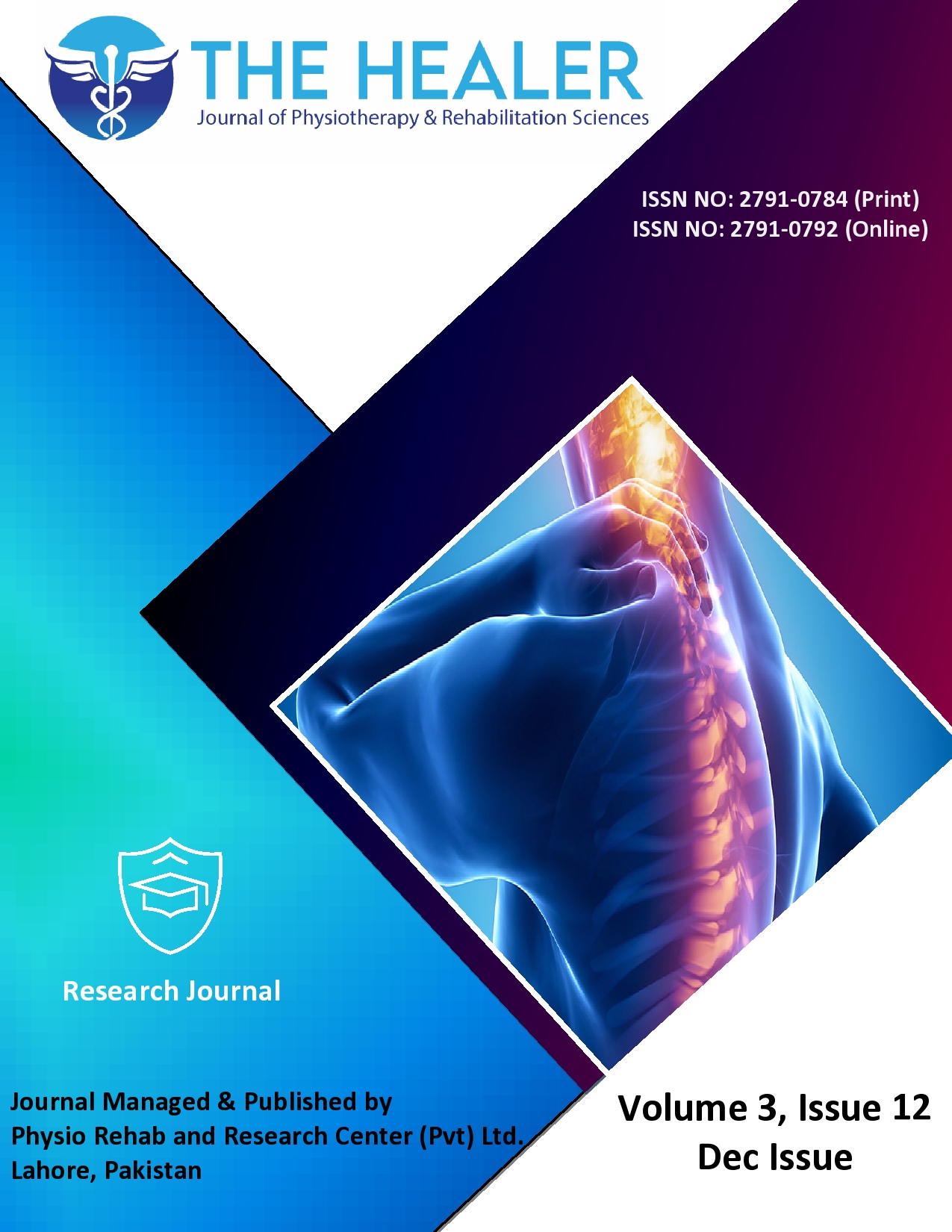Comparative Effects of Myofascial Release versus Positional Release in females with Piriformis Sysndrome; A Randomized Controlled Trial
Effects of Myofascial vs Positional Release in Piriformis Sysndrome
DOI:
https://doi.org/10.55735/hjprs.v3i12.263Keywords:
myofascial release, piriformis syndrome, positional release, trigger pointAbstract
ABSTRACT:
The piriformis is a hip internal rotator that experiences muscular imbalance from overuse and stress. When the hip is excessively internally rotated and abducted, the eccentric contraction leads to loading of the piriformis muscle, which causes overlengthening and compression on the muscle, which in turn causes several incapacitating conditions like low back pain, sciatica, and much more. The objective of this study is to compare the effects of Myofascial Release Therapy and Positional Release Therapy in females with piriformis syndrome. A randomized clinical trial was conducted in which 56 female patients from Outdoor Patient Department of Allied hospital, Faisal hospital and District Head-Quarter hospital Faisalabad were randomly allocated through lottery method on the basis of inclusion and exclusion criteria after signing the consent form. Participants were assigned to two groups i.e. Group A and group B. Group A received Myofascial Release Therapy and group B received Positional Release Therapy program. Done this technique for five minutes and three sets were performed for each set should be of five minutes for three times in a week for four weeks. Outcome measure were pain, Range of Motion of hip and gait parameters. Pain was be assessed by Visual Analogue Scale, Range of Motion was assessed by goniometer while gait assessment will be done before and after the 4 weeks of treatment period. For the analysis of data, SPSS version 26 was used. When statistical analysis of Mann-Whitney U test was done between group A and group B, remarkable differences between before and after test values of Visual Analogue Scales and Range of Motion of hip joints and muscle strength were seen in both groups as the level of significance was less than 0.05. So, this was obvious that MFR and PRT treatments both were shown advantageous in relations of decreasing pain and increasing ROM of hip joint and increase the muscle strength of glutei among females with piriformis syndrome.
Keywords: Piriformis Syndrome, Myofascial Release Therapy, Positional Release Therapy, Ultrasound Therapy, Trigger Point, Range of Motion, Pain
Downloads

Published
License
Copyright (c) 2024 The Healer Journal of Physiotherapy and Rehabilitation Sciences

This work is licensed under a Creative Commons Attribution 4.0 International License.














